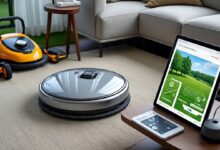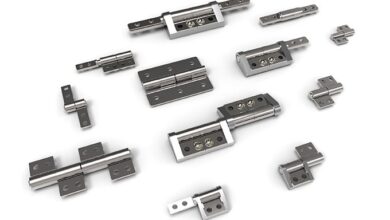Advancements in Consumer Electronics for Home Robotics
Explore the future of smart homes with advanced robotics. Discover how AI, sensors, and connectivity are transforming everyday living into seamless innovation.

The realm of consumer electronics has been perpetually evolving, with home robotics standing at the vanguard of innovation. The integration of cutting-edge technology into everyday living spaces has transformed the concept of a smart home from a futuristic dream into a tangible reality. These advancements have been driven by breakthroughs in artificial intelligence, sensor technology, and connectivity, making home robotics more accessible, efficient, and multifunctional than ever before.
Artificial Intelligence: The Brain Behind the Bots
Artificial Intelligence (AI) has significantly advanced the capabilities of home robotics. Modern robots are now equipped with AI systems that allow them to learn from their environment, adapt to new tasks, and even predict user needs. This progress in AI has enabled robots to handle complex tasks such as cleaning, cooking, and even providing companionship. For example, AI-driven vacuum robots can now map entire home layouts, remember room-specific cleaning preferences, and suggest optimal cleaning schedules.
Sensor Technology: Enhancing Perception and Interaction
Another pivotal development in home robotics is the improvement in sensor technology. Advanced sensors allow robots to better perceive their environment, enhancing their ability to navigate and interact with it safely and efficiently. Modern robots are equipped with a variety of sensors, including cameras, lidar, ultrasonic sensors, and infrared sensors, which provide comprehensive environmental data. This sensory input enables robots to perform tasks with greater precision, such as avoiding obstacles, recognizing objects, and interacting with humans.
Seamless Connectivity: The Backbone of Smart Homes
Connectivity is the linchpin of smart home ecosystems, and advancements in this area have significantly impacted home robotics. With the proliferation of IoT (Internet of Things) devices, home robots can now seamlessly integrate into smart home networks. This connectivity allows for centralized control of various home appliances, enhancing the user’s convenience and efficiency. Through Wi-Fi, Bluetooth, and Zigbee, robots can communicate with other devices, receive updates, and provide real-time data to users.
Energy Efficiency: Powering the Future of Robotics
As home robotics become more prevalent, energy efficiency has become a crucial factor in their development. Recent advancements have focused on optimizing power consumption to extend battery life and reduce environmental impact. Innovations in battery technology, such as lithium-ion and solid-state batteries, offer higher energy densities and faster charging times, making robots more sustainable and user-friendly.
Customization and Personalization: Catering to Individual Needs
One of the most exciting trends in home robotics is the ability to customize and personalize robots to meet specific user needs. From selecting the appearance and personality of companion robots to programming specific cleaning patterns, users can tailor their robotic experience to suit their lifestyle. This level of personalization not only enhances user satisfaction but also maximizes the functionality of home robots.
The Role of Commercial Electronics Stores
With the rapid evolution of home robotics, Commercial electronics store play a pivotal role in making these advanced technologies available to consumers. These stores not only offer a wide range of robotic products but also provide expert advice, installation services, and after-sales support. As consumer demand for home robotics continues to grow, commercial electronics stores are essential in bridging the gap between technological innovation and everyday application.
Conclusion
Advancements in consumer electronics have undeniably propelled the development of home robotics, transforming the way we live and interact with our environments. With continuous innovation in AI, sensor technology, connectivity, energy efficiency, and personalization, the future of home robotics is not just promising—it is here. As these technologies become more integrated into our daily lives, they promise to enhance convenience, efficiency, and quality of life for users worldwide.











